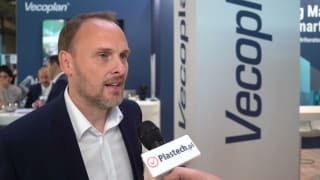
B.IRD Machinery is set to showcase its latest advances in infrared rotary drum systems for plastics heating and drying at K 2025 in Düsseldorf from 8 to 15 October. The company engineers compact devices for bulk materials, including pellets, regrind, flakes and powders, adapting infrared rotary drum technology for smaller throughputs. Against conventional hot-air drying, the proprietary B.IRD process is reported to deliver more than 90% time savings with process times measured in minutes instead of hours, along with energy savings of up to 70%. The company also points to exceptionally fast changeovers and enhanced material efficiency, which together open new process control options across plastics processing. “With B.IRD, we have adapted the well-established IRD technology from large-scale plants for smaller throughputs, allowing injection moulding to now benefit from the significant advantages of infrared heating,” says Urban Stricker, the IRD inventor and the company’s founder. For common injection moulding materials such as PA, PC, PMMA and ABS, standardised B.IRD 5 series machines cover throughputs from 4 to 100 kg/h for deep drying to below 200–1,000 ppm, with continuous drying times typically between 3 and 30 minutes depending on material and task. Material changeovers are completed in minutes by swapping the rotary drum, and higher feed temperatures widen the processing window. “This allows for better utilisation of injection moulding machines, optimises energy and material efficiency, and significantly boosts process productivity, thereby improving overall profitability,” adds CEO and co-founder Daniel Stricker.
Injection moulding of engineering plastics
The B.IRD approach transfers infrared rotary drum drying from large installations to smaller, continuous throughputs suited to injection moulding operations. For PA, PC, PMMA and ABS, the B.IRD 5 series provides deep drying to specifications below 200–1,000 ppm at 4 to 100 kg/h. Depending on the polymer and the task, the continuous process takes approximately 3 to 30 minutes, which represents more than 90% time reduction compared with conventional methods and up to 70% lower energy consumption. Changeovers between materials are performed by changing the rotary drum, reducing downtime to minutes. According to the company, the ability to feed material at higher temperatures substantially widens the processing window.
“This allows for better utilisation of injection moulding machines, optimises energy and material efficiency, and significantly boosts process productivity, thereby improving overall profitability,” says Daniel Stricker.
New impulses for TPU processing
In cooperation with a material manufacturer, B.IRD investigated TPU drying and adapted the infrared radiation process for this elastomeric material. Forced conveying and mixing of pellets in the rotary drum provide uniform heat treatment, while short exposure times minimise material degradation. According to the company, this mitigates two common issues in conventional drying, the no-flow effects in hoppers and prolonged exposure to high temperatures. As a result, the method can help lower the often high scrap rates in TPU injection moulding and save costly material.

Optimising melt homogenisation
Beyond moulding, the technology supports preparation and pre-processing for compounding and recycling. When multiple components with different melting points are combined, achieving homogeneous melt can be challenging. Targeted in-line pre-heating of specific fractions with B.IRD is presented as a solution. One international client reportedly achieved a sustainable 20 kg/h increase in product yield by reducing filtrate, allowing the device to pay for itself within a few months. Further practical tests are under way, including efforts to reduce odours in recyclates.
B.IRD Machinery will exhibit in hall 6, stand D76, on the joint stand of the State of North Rhine-Westphalia.


